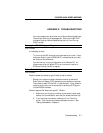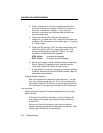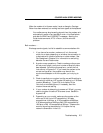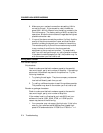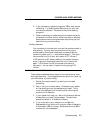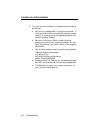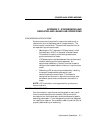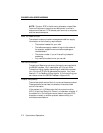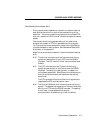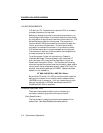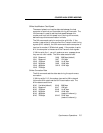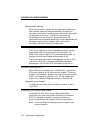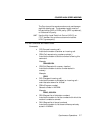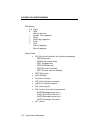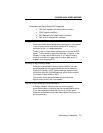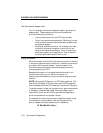
COURIER HIGH SPEED MODEMS
Synchronous Operations F-3
Data Rate Synchronization (&Xn)
During synchronous operations, transmit and receive clocks at
both ends of the phone link control the precise timing of the
data flow. The communications equipment at the remote DTE
and your modem and DTE must all handle the data at the same
speed.
The transmit clock timing signals setting, &Xn, determines
whether the modem or DTE will generate the timing signals.
For Online synchronous operations, the source for this setting
must be the same on both systems. See Connection Rate (%Nn,
&Nn) later in this appendix.
Most Online synchronous users will require the default setting,
&X0.
&X0 The Courier is the source of the Transmit clock timing
signals and sends them to your DTE over the RS-232
interface. The DTE rate will follow the connection rates.
Default.
&X1 The DTE is the source of the Transmit clock timing
signals and sends them to the Courier over the RS-232
interface. This setting is used typically in leased line
multiplexed operations. (Multiplexors divide the phone
channel so that the channel carries several calls at the
same time.)
The DTE ignores the Courier's clock timing signals and
negotiates the DTE and connection rates.
&X2 The Courier's Receiver clock is the source of the timing
signals. The signals are looped to the Transmit clock and
sent to your DTE over the RS-232 interface. This setting
is only used in those systems that require
synchronization of data flowing in both directions.



